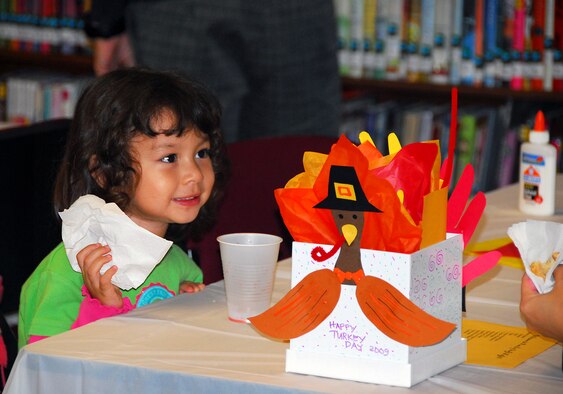
Thanksgiving will soon be here. Originally a day dedicated to giving thanks to God for the many things we often take for granted, it has morphed into a day of overeating, football games, and searching for sales.
Many people of my generation think youth today suffer from "affluenza". They decry the attitude of entitlement. "I don't care how, I want it now!" as Veruca Salt from Willy Wonka continually screamed.

A thankful heart, on the other hand, is almost
synonymous with happiness. Our children
have a better perspective on life, are more optimistic, and find joy in what
they do have. Their world fills with
love, compassion, enthusiasm, and confidence—and their satisfaction with life
soars. They develop a healthy
understanding of how interdependent we all are—and they may be more inclined to
treat others with genuine respect.
However, children are by nature self-centered. "Recognizing
that someone has gone out of the way for you is not a natural behavior for
children -- it's learned."
So How do we teach them?
Preschoolers:
1. Toddlers
learn by imitation. If you tell them
thank you every time they give you something, or do something you ask them to
do, pretty soon they will surprise you with a thank you when you give them
something. The meaning behind the words
isn’t there yet, but the habit is being established.
2. At dinner or at bedtime,
let them tell you the three best things (or one, if that is all they can manage) about their day.
3. Start
thank you notes. They can just be a
scribble or a picture (augmented with your interpretation, if desired), but
grandparents will be happy to know your child realizes who gave them the gift.
Grade
schoolers:
When your child reaches school, it is time to learn the
feelings behind the rote expressions of thanks.
They are old enough to learn empathy and appreciation.
1. Continue
having your children send Thank you notes.
They should name the gift, tell why they like it, and how they are going
to use it.
2. Good manners and gratitude
merge. Insist
on politeness and respect all around. Teach young
children to say "thank
you" as part of a full sentence, for example, "Thank you, Daddy, for making dinner." Encourage
school-aged kids to say thank you throughout the day, especially when you help
them get ready for school or drive them to activities. Have them thank
coaches for practice and music teachers for lessons.
3. This
is a good time to help them do things for others. It may be a “secret fairy” gift to a sibling
(like making their bed), baking cookies for the neighbors, talking to a shy
classmate. Prepare and deliver a homemade "thank you" to your
local fire or police department, or your pediatrician’s or dentist’s office. This teaches them empathy and to think of
others as well as themselves. Children
find great happiness in planning and doing something nice for someone else. Our grandson Jayson, who was battling cancer,
asked that instead of birthday presents for himself, he could give presents to
the other children in the hospital who were also battling cancer. His parents have continued that tradition
since his passing.
5. It’s human nature to see the glass
half-empty from time to time — and children are no exception. When kids
complain or gripe, acknowledge their unhappiness, and then ask them to find the
silver lining. Play Pollyanna’s glad
game. Sometimes, it’s good to look back
and note the positive results of disappointing days. It’s called an “attitude of gratitude” for a
reason — it’s about perspective more than circumstance.
6. Likewise, come home and talk about
the happy parts of your day, making a conscious choice not to complain.
7. Tame
the gimmes. It may seem counter-intuitive, but when our children are not happy
with all they have and only want more, it may be time to give less. Remember the “Little House on the Prairie”
Christmas’, when Laura was ecstatic to get a piece of homemade candy and knit
mittens? People who have less are more
grateful for what they have. And they put
more thought into what they request.


8. Having too many
choices breeds unhappiness– you are always wondering if you could have
something better. Monitor your children's media: Our children
are bombarded with age-targeted marketing that they are too young to
resist or understand. Media fuels materialism. It is our job to
carefully monitor their media so that they aren't dragged into marketing and
made to feel incomplete or unfulfilled.
9. Have ‘em
pitch in when they want something. If your kids get an allowance or earn money
at a job, have them participate in buying some of the things they want. When
kids themselves take the time to save up, they have an ownership stake in the
purchase and gain an understanding of the value of a dollar by working toward
what they want. It also teaches restraint and encourages kids to appreciate
what they have, as well as giving them a more realistic perspective on what you
and others do for them.
10. Thank
them. I remember thinking, one time when
my mother was scolding me for something I hadn’t done, “Why don’t you ever
thank me for the things I do?” I went
through a list in my mind of all the things I had done that I’d never been
thanked for. Can your children make a similar list? One mom put her thanks on sticky notes and
posted them wherever the good deed was done.
After awhile, other family members started doing the same.
11. Thank those who serve. Your example
of acknowledging those who quietly make a difference in your life, from the bus
driver to the person sweeping up the aftermath of a family lunch out, sends a
powerful message to your children
Teens
The first thing to remember is that
teenagers’ unique developmental task is to individuate: to break away from you,
the parent who is looking for a little appreciation.
Every time teens take your
advice—about how to be happier, or by following your instructions for
practicing gratitude—they are setting themselves up to remain dependent on you
and your great wisdom. But their main goal as teens is to get you to
recognize their wisdom, their independence. Herein lies the
problem.
Gratitude makes most of us happier
because it is such a social emotion; it cultivates our sense that we are
connected to each other. And social connections—ties to friends and
family and neighbors—are the very stuff of happiness. But if you are a
teenager trying to prove your independence, gratitude can make you feel more
beholden to your parents, which doesn’t feel good.
By this time,
kid need to learn how to “own” their gratitude. With their growing need for
independence, they’ll enjoy showing their appreciation and making a difference
on their own terms.
1.
Let teens lead. One size doesn’t fit all when it comes to practicing
gratitude—and a gratitude practice is going to be a lot less effective if it is
seen as a chore or an assignment. So tell teens you want them to design a
gratitude practice for your whole family this year. “You are old enough:
You design a new tradition for us!” And by all means, let them take the
credit, even if they come up with something you suggested weeks ago.
2.
Allow snarkiness, teasing, and humor in their expressions of gratitude. You
may receive sarcastic comments like, “Well, I’m grateful I don’t have any
classes with her.” Sometimes teen gratitude is, well, a little
minimalist.
3. Use gratitude to cultivate the growth mindset in
difficult times. What did you learn from that terrible experience?
What good came out of it, despite the difficulty? The aim is to get to
something along the lines of, “Thank goodness that X happened, because
otherwise I wouldn’t have had Y opportunity!”
4. Help them give
credit to others. Teens tend to take
credit when things go good, blame others for bad times. Point out how others helped them reach their
successes and help them take responsibility for their failures.


5.
Be persistent. When teens feel authentic gratitude, it is a positive emotion
for them just like for everyone else. When they create a gratitude
practice that works for them, feelings of gratitude will become habitual,
hopefully built into their daily lives. Even if they resist heartily at
first—remember, that is their job as adolescents—I have heard many, many
stories of gratitude resistors who blossom into appreciative young adults.
Vicki Hoefle, director of Parenting on
Track, a parent-education program based in East Middlebury, VT (and the mother
of five teenagers), concurs: "As nice as it is to think about having a
five-year-old who appreciates and shows gratitude for everything, the truth is,
parents can feel successful if they raise a thirty-five-year-old who embodies
that grateful spirit."







